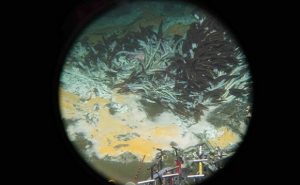Deep-sea microbes could be used to clean-up the environment, and even help combat climate change


Scientists from the University of Texas have discovered nearly two dozen new types of deep-sea microbes, many of which gobble hydrocarbons like methane and butane, as well as sulphur, to survive.
The finding suggests that these microbes could already be helping to protect the environment by lowering the concentration of harmful greenhouse gases in the atmosphere.
Scientists believe these microbes could possibly assist in cleaning up oil spills in future.
The new deep-sea microbes were discovered in the deep-sea sediments in the Guaymas Basin in the Gulf of California. Guaymas Basin is a young, active seafloor-spreading centre characterised by high water column productivity and fast sedimentation rates. Hydrothermal activity at this site has led to accumulation of massive layers of organic-rich sediments.
The team collected sediment samples from 2,000 metres below the surface, where temperature was around 200 degrees Celsius due to volcanic activity. Samples were collected using the Alvin – the submersible that has earlier found the Titanic in the ocean.
From the samples collected, researchers recovered 551 genomes, of which 22 represented new unique lineages. Five genomes even represented completely new phyla.
“Beneath the ocean floor huge reservoirs of hydrocarbon gases – including methane, propane, butane and others – exist now, and these microbes prevent greenhouse gases from being released into the atmosphere,” said assistant professor Brett Baker, who is also the lead investigator of the study.
“We think that this is probably just the tip of the iceberg in terms of diversity in the Guaymas Basin,” he added.
This study represents the largest-ever genomic sampling of sediments collected from Guaymas Basin. Researchers are now carrying out more DNA sequencing to discover new species of microbes in the area.
They are also collecting new samples from the areas of basin that were been studied before.
The study was co-authored by professor Andreas Teske at the University of North Carolina and Nina Dombrowski, former postdoctoral researcher from the University of Texas.
The findings of the study are published in journal Nature Communications.
https://www.v3.co.uk/v3-uk/news/3067200/scientists-discover-deep-sea-microbes-that-consume-hydrocarbons-to-survive-and-grow



